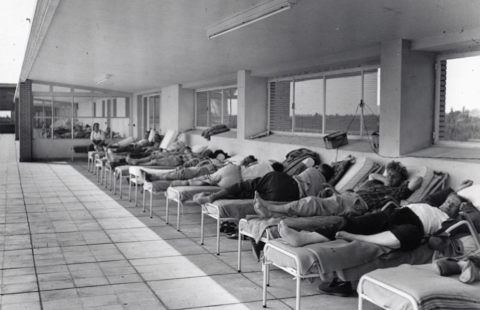
Mission
The ELHN Working Group Occupational Health and Safety History (WG OHSH) aims to gather historians who deal with different aspects of occupational health by offering them a comparative but also decompartmentalized framework. Too often indeed, studies are confined to legal categories, such as occupational accidents or occupational diseases, which are themselves disconnected from environmental issues. By bringing together researchers in the field, the working group intends to contribute to a more integrated vision of the risks to which women and men are exposed at work, as well as the responses that workers have made to them.
Scope
Over the past two decades, the history of occupational health has contributed in various ways to the renewal of the history of work. On the one hand, it has brought attention back to the concrete work, on the scale of the workshop, where the work affects health. On the other hand, it re-examined industrial relations outside the sole field of wage and working time bargaining, in a complex game of actors involving workers and unions, employers, public authorities and experts. This history has paid particular attention to the agency of the workers themselves faced with the various forms of risk, workers who cannot be reduced to their only dimension of victims.
Major results have been obtained in the study of emblematic occupational diseases, such as silicosis, asbestosis, lead poisoning, or musculoskeletal disorders, and the matrix role of workers' compensation legislation has been once more investigated and deepened. Concerning these various risks, particular attention was paid to their invisibilization and their confinement in the professional sphere, as well as to the game of the actors mobilized for their recognition. Moving away from the classic Ramazzinian approach pairing one disease to one particular job, research was recently focusing on risks that are less obviously attributable to a specific occupational activity, such as occupational cancers, chronic bronchitis, etc., as well as on the most contemporary forms of risk, including psychosocial risks. Recently too, the field has been renewed thanks to the dialogue with environmental history.
Today, research is being carried out in several directions:
- The availability of archives from the 1980s makes it possible to investigate risks related with the increasing use of more pernicious toxicants, for which the effects are sometimes delayed over several generations (PCBs, hormone disruptors, etc.).
- The attention paid to the most severe occupational diseases should not lead to ignore the multiple attacks on workers' bodies which, by accumulating, contribute to wear and tear at work and premature aging. This perspective applies to the 19th, 20th and 21st centuries.
- The mobilizations of former employees and their relatives, often supported by committed experts who, with or without the support of the unions, aim to make the damage to workers' health a real public health issue.
- The meeting between occupational health history and environmental history allows to rethink the boundaries of what is an “occupational” and what is an “environmental” issue. For instance, it allows to follow pollution beyond the walls of the workplaces, to study how this pollution can sometimes affect both workers and residents.
- Some business sectors and jobs remain blind spots in the history of occupational health or are still poorly studied. This is particularly the case for the public service, whose study highlights the ambivalence of the State as employer, legislator and regulator and the specific mobilizations of public servants in this field.
- The gendered dimension of occupational risks deserves particular attention, both in their identification and in their recognition. The gender approach makes it possible to qualify certain previous studies and sheds light on the mechanisms that conceal or promote the recognition of women's work-related wear and tear or their occupational diseases.
- Te various strategies for outsourcing risks, on a local scale through temporary employment or subcontracting, or, in an international division of risk at work, through the relocation of the most dangerous activities, call for a more global history of occupational health.
Activities
- Workshop “Occupational Health and Safety: Collective conflicts and individual litigations", First ELHN Conference, Torino, December 14-16, 2015.
- Workshop “Santé et environnement au travail (XVIIIes-XXe siècles)", Second ELHN Conference, Paris, November 3, 2017.
- Workshop “Health, Environment and Labour in Mining”, organized with Working Group Labour in Mining, Third ELHN Conference, Amsterdam, September 21, 2019.
Contact
- Renaud Bécot, Sciences Po Grenoble, renaud.becot@iepg.fr
- Eric Geerkens, Université de Liège, e.geerkens@uliege.be
- Anne Marchand, Université Sorbonne Paris Nord, anne.marchand@univ-paris13.fr
External Links
[last updated 7 April 2021]
